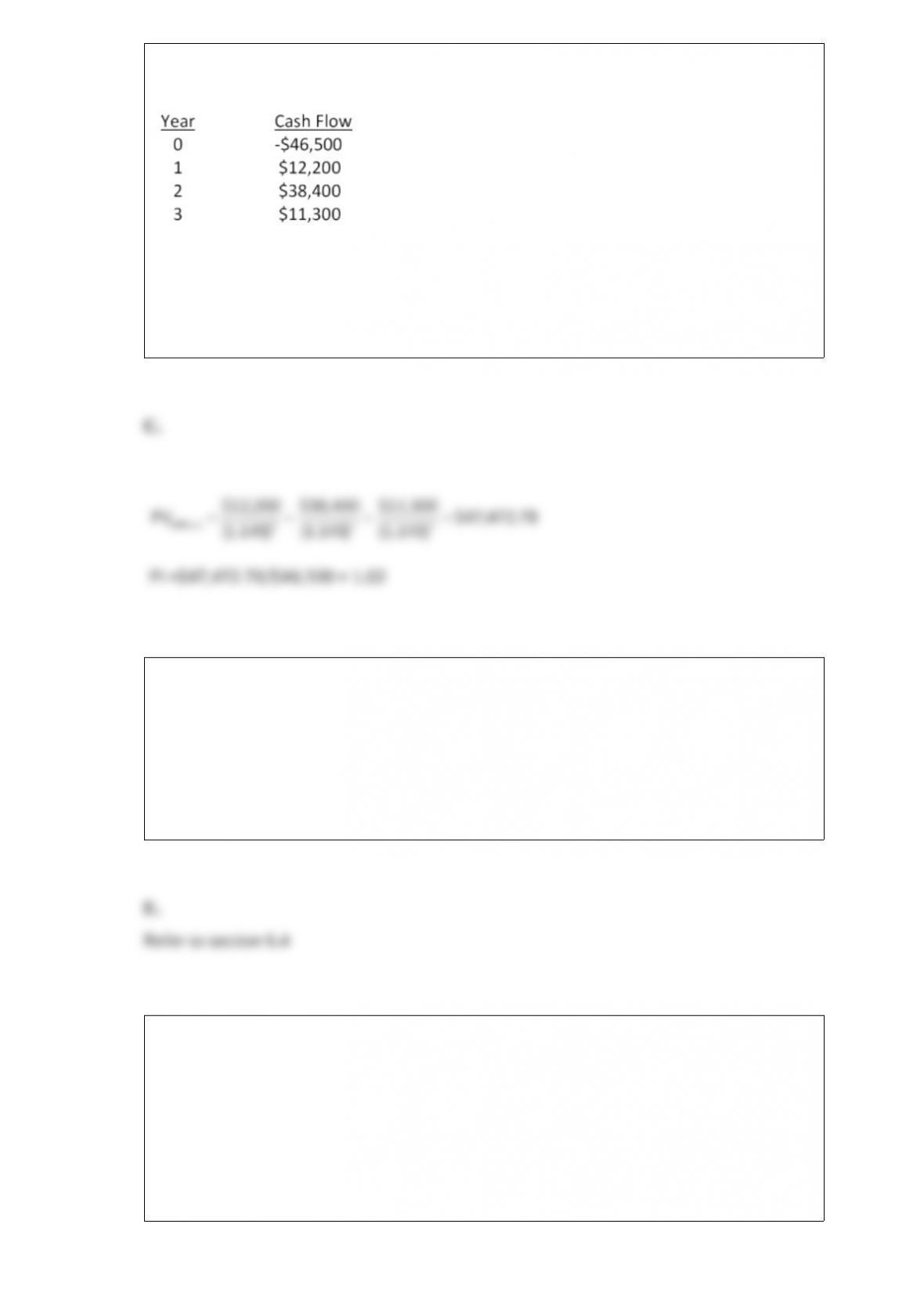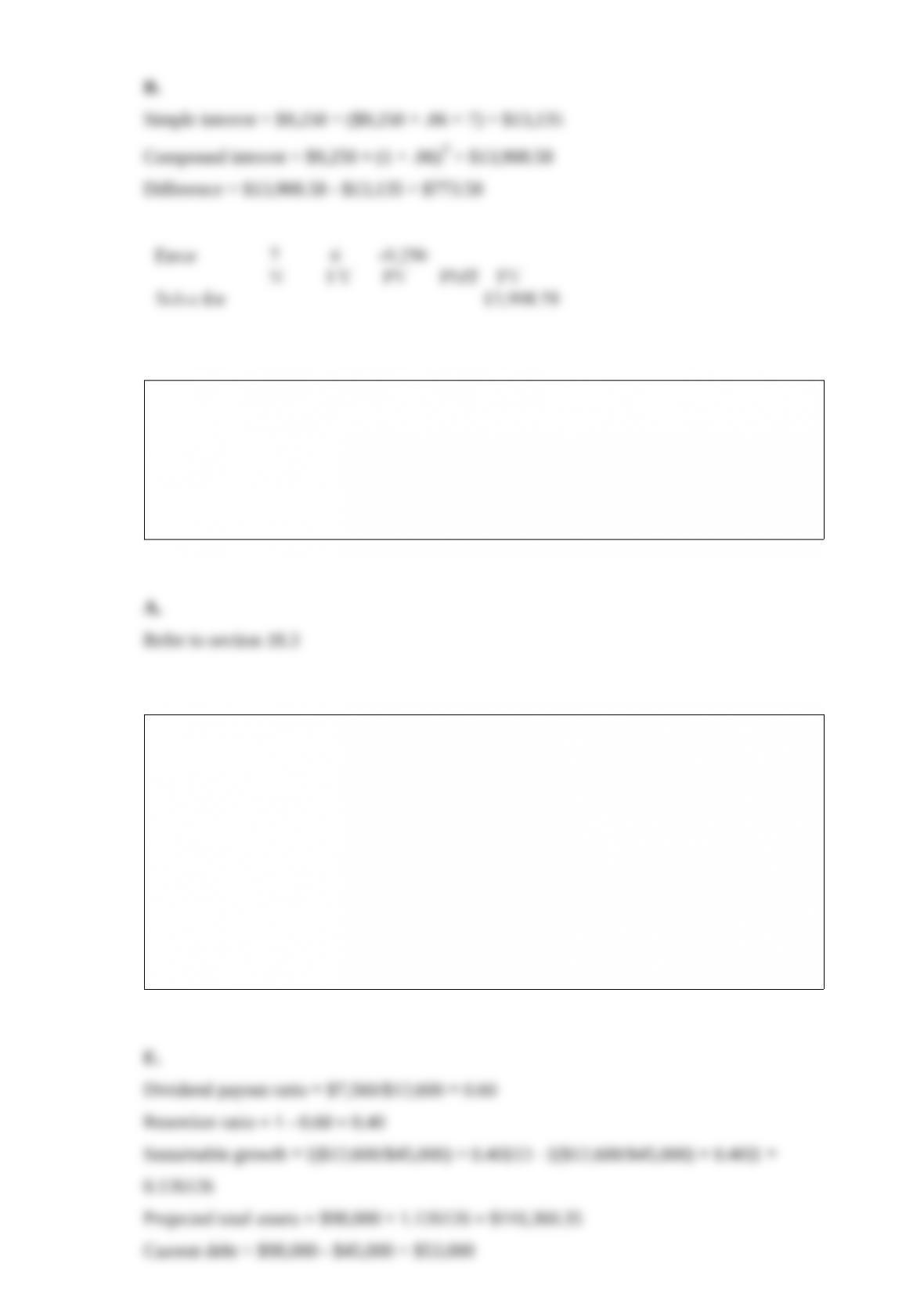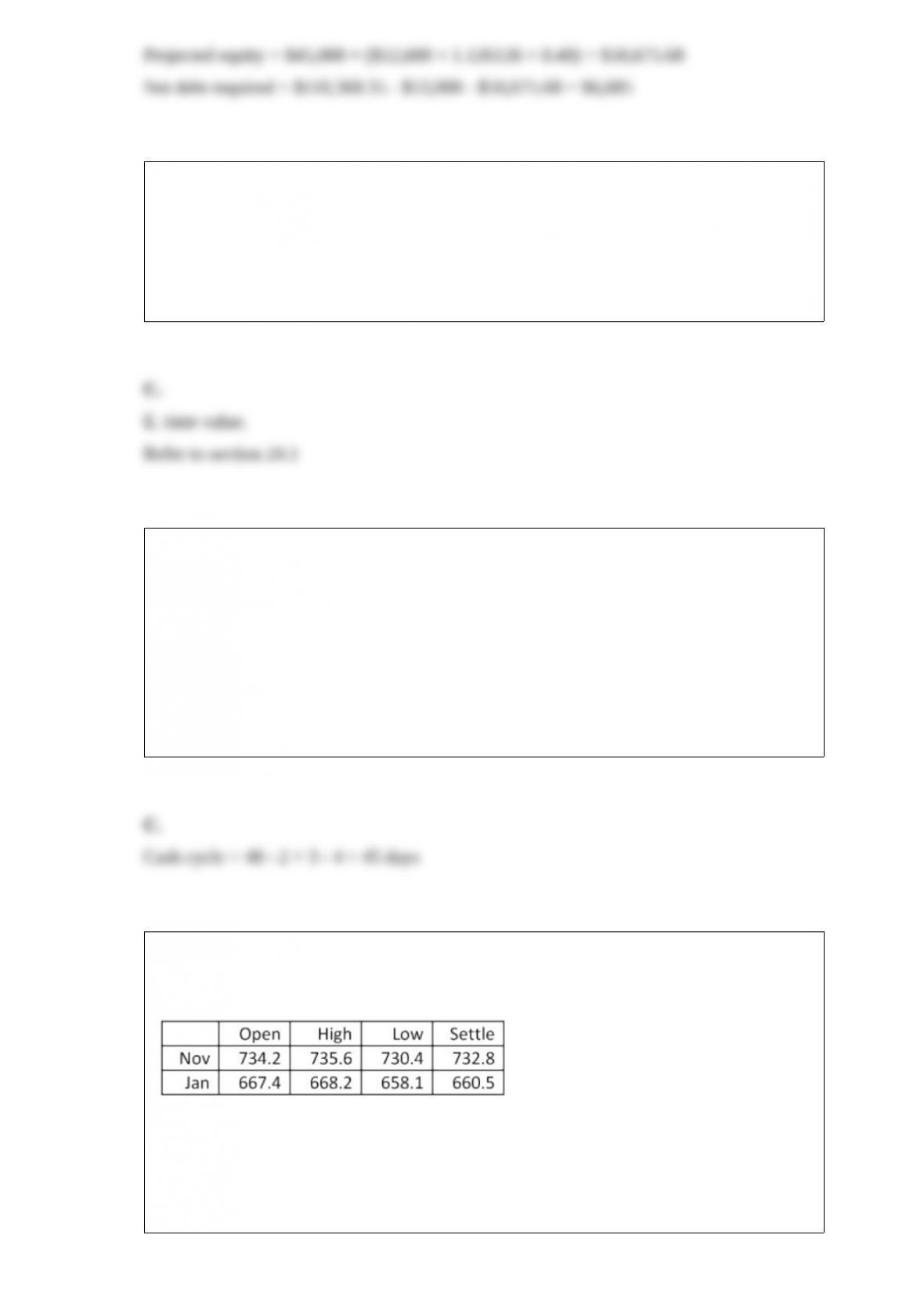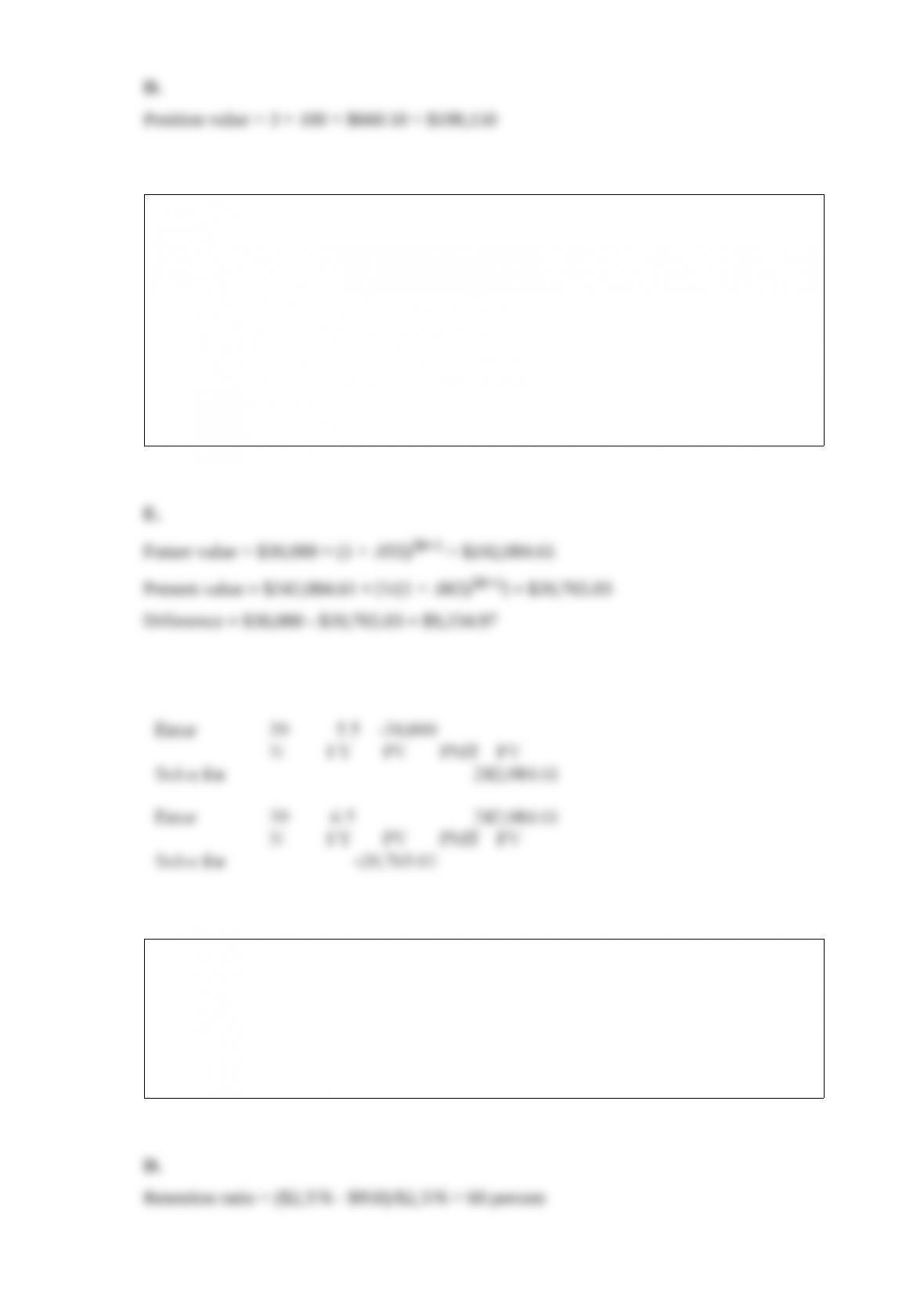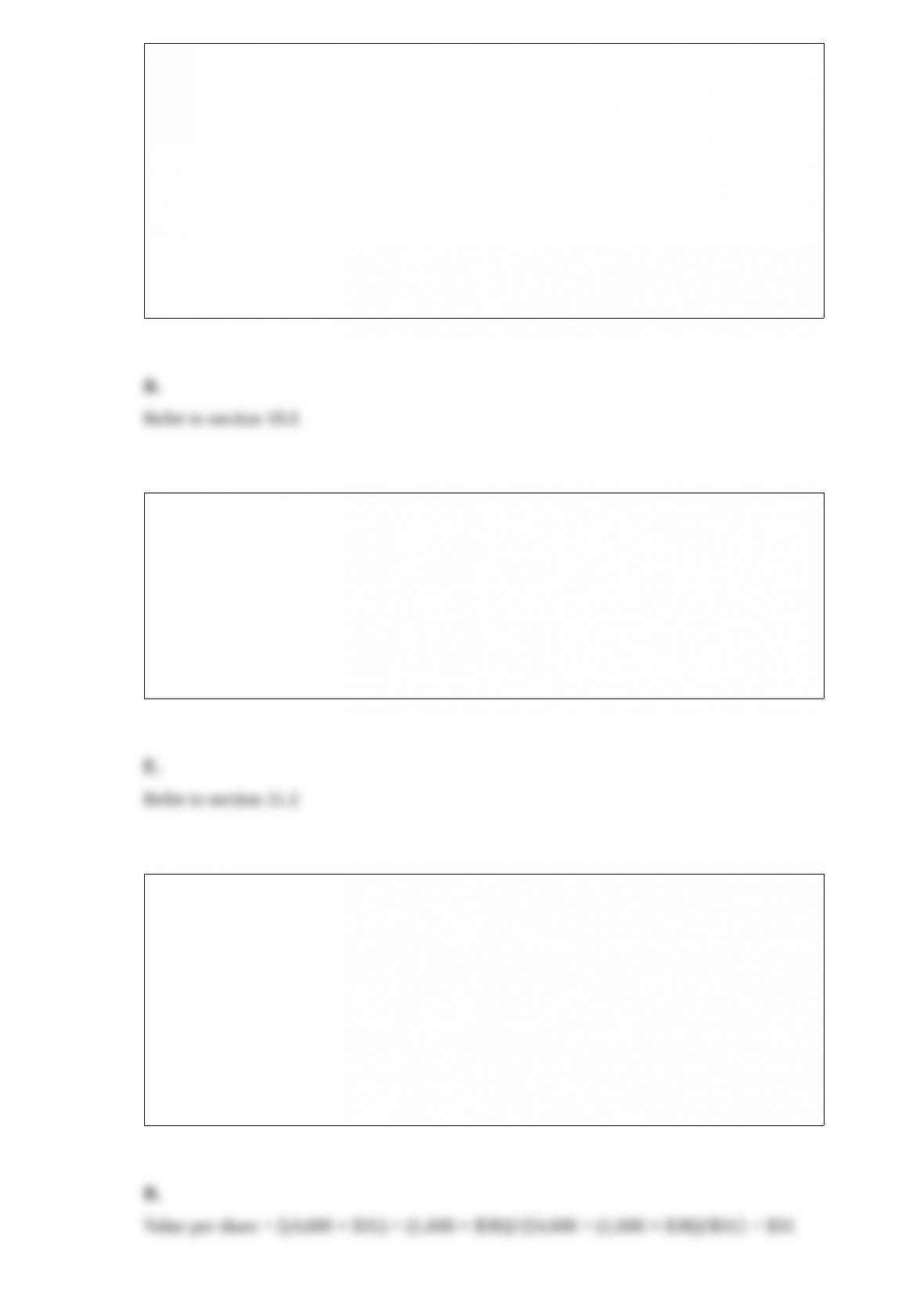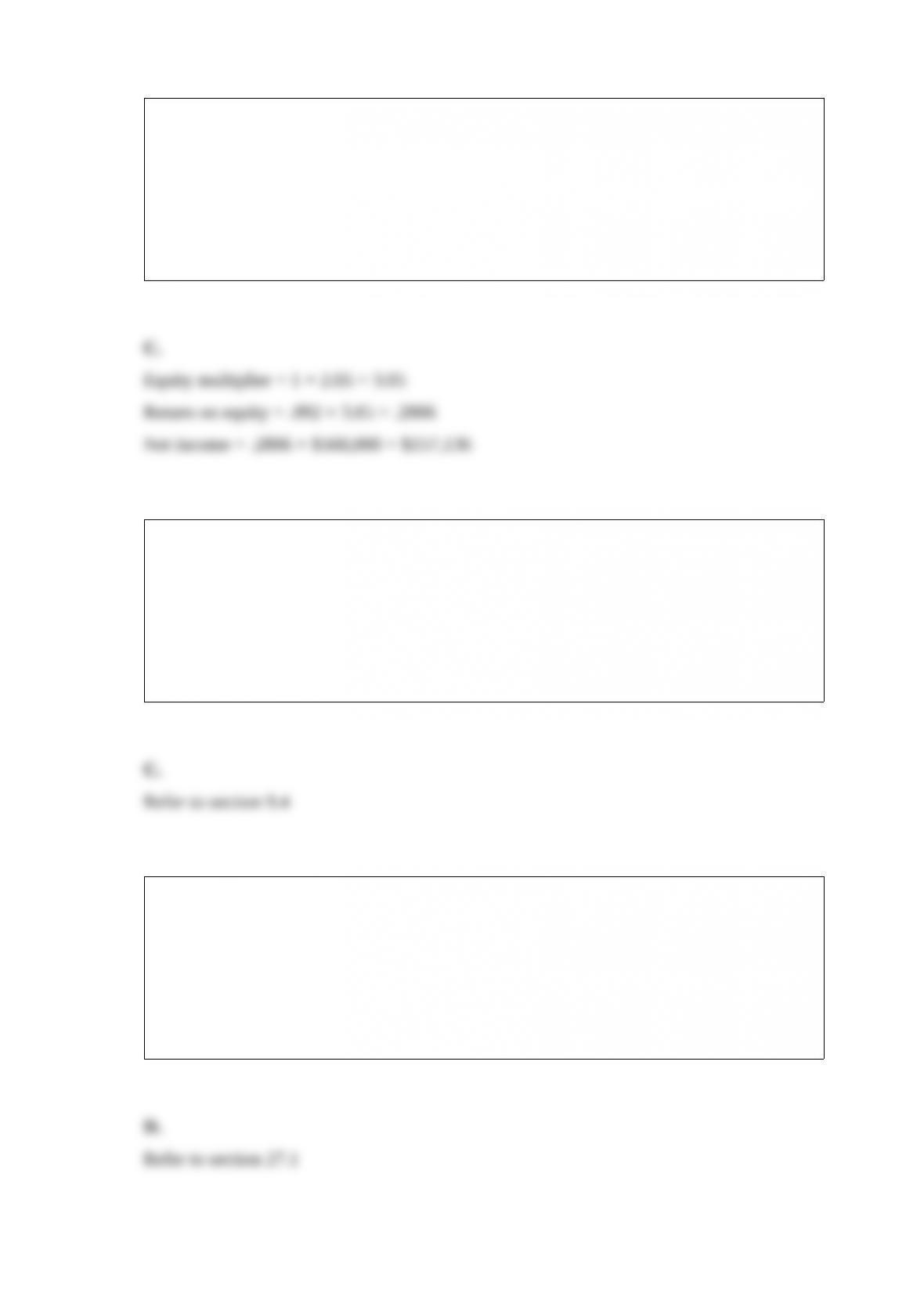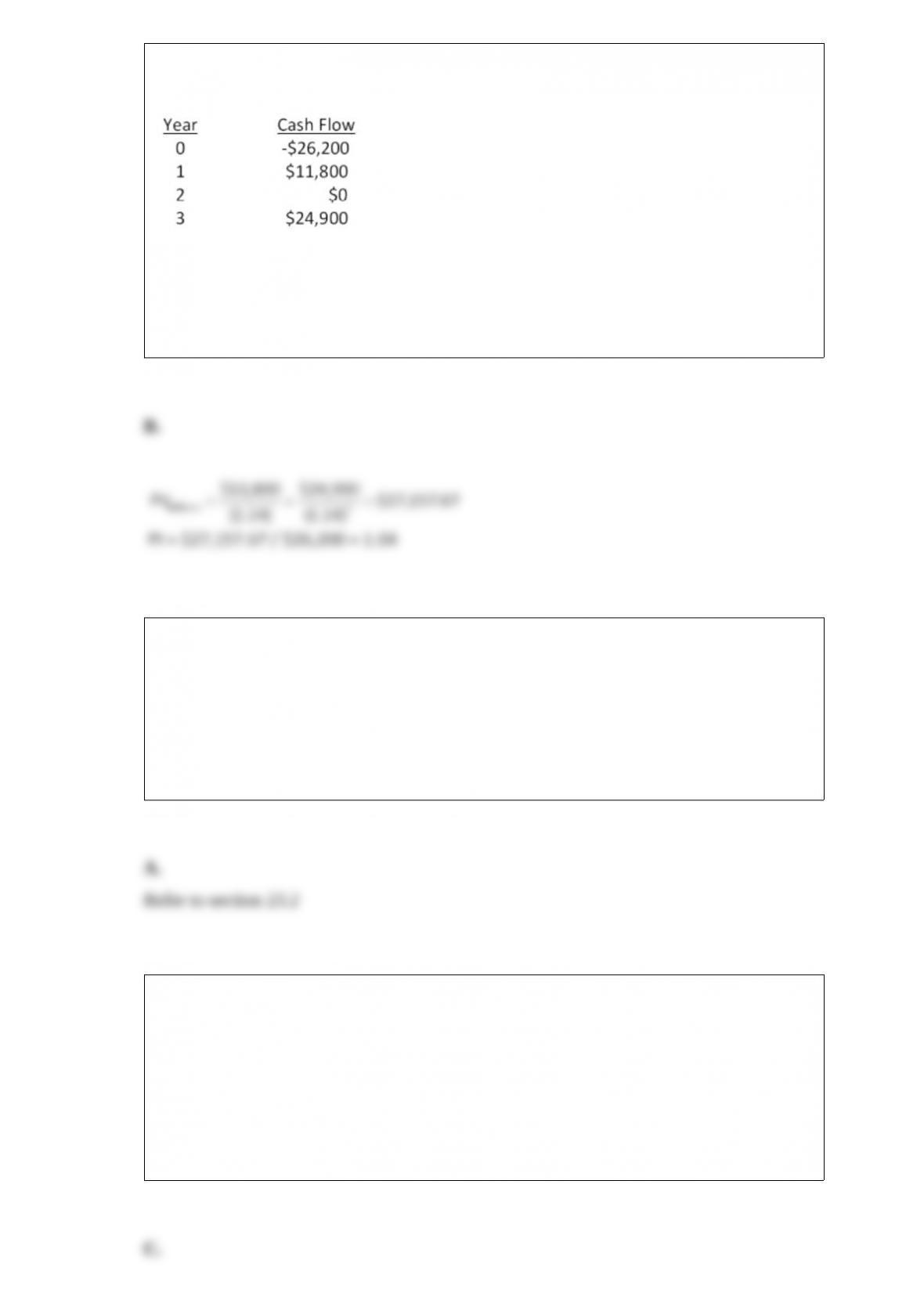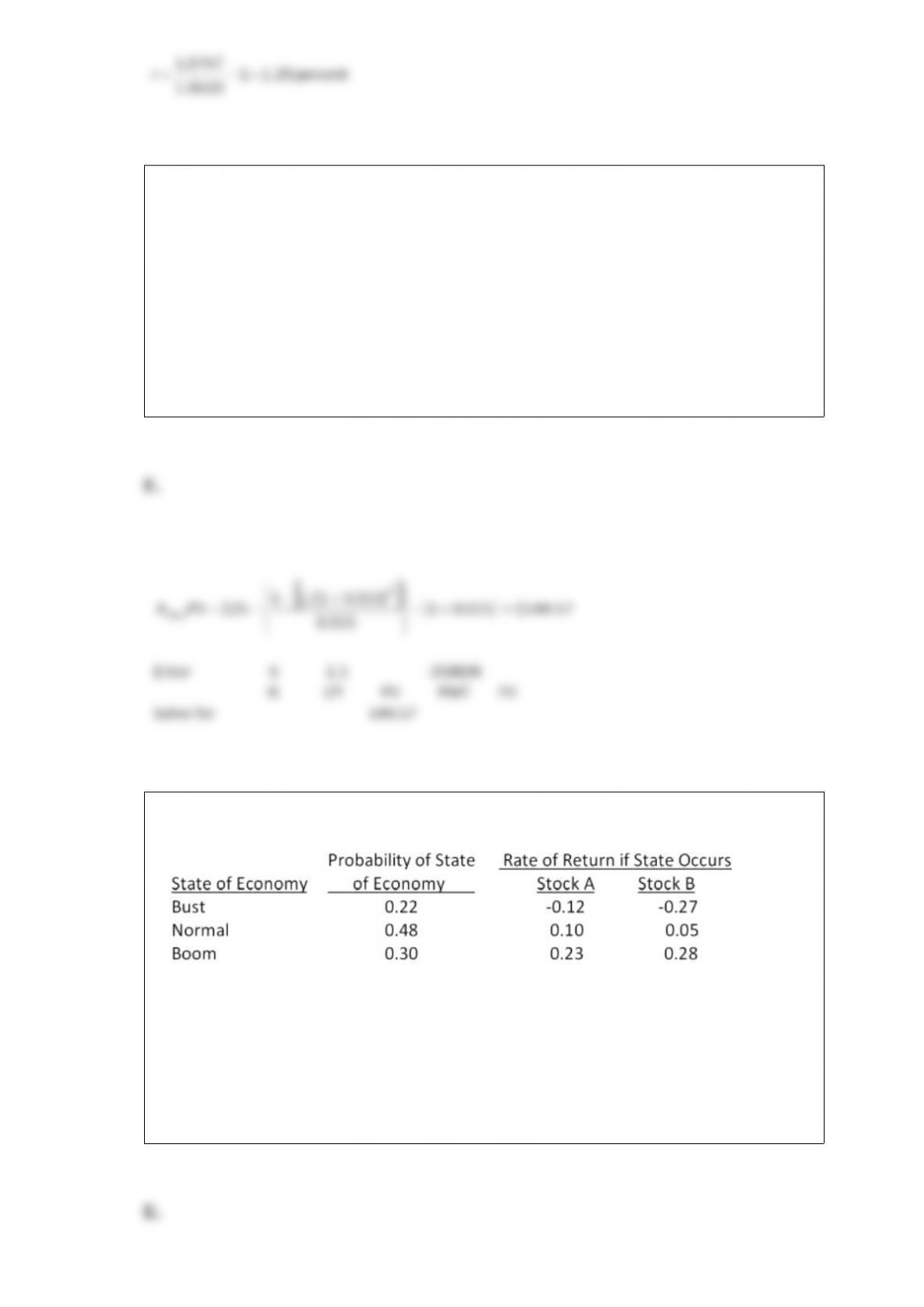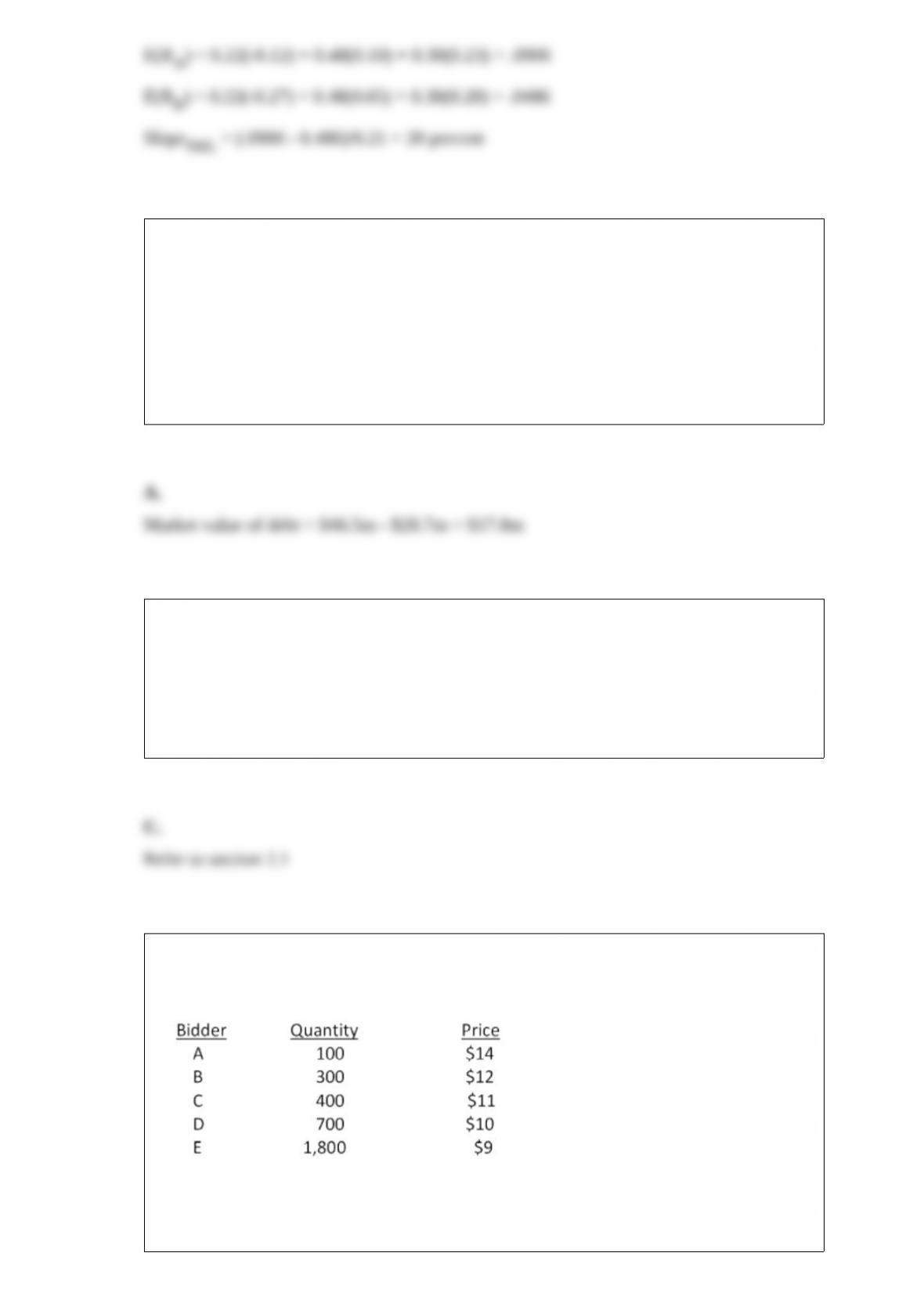B. $12,000
C. $13,400
D. $14,400
E. $16,800
Which one of the following sets of dividend payments best meets the definition of two-
stage growth as it applies to the two-stage dividend growth model?
A. no dividends for 5 years, then increasing dividends forever
B. $1 per share annual dividend for 2 years, then $1.25 annual dividends forever
C. decreasing dividends for 6 years followed by one final liquidating dividend payment
D. dividends payments which increase by 2, 3, and 4 percent respectively for 3 years
followed by a constant dividend thereafter
E. dividend payments which increase by 10 percent per year for 5 years followed by
dividends which increase by 3 percent annually thereafter
Which one of the following formulas correctly describes the relative purchasing power
parity relationship?
A. E(St) = S0 × [1 + (hFC - hUS)]t
B. E(St) = S0 × [1 - (hFC - hUS)]t
C. E(St) = S0 × [1 + (hUS + hFC)]t
D. E(St) = S0 × [1 - (hUS - hFC)]t
E. E(St) = S0 × [1 + (hUS - hFC)]t
The Cycle Shoppe has decided to offer credit to its customers during the spring selling
season. Sales are expected to be 330 bicycles. The average cost to the shop of a bicycle
is $300. The owner knows that only 93 percent of the customers will be able to make
their payments. To identify the remaining 7 percent, she is considering subscribing to a
